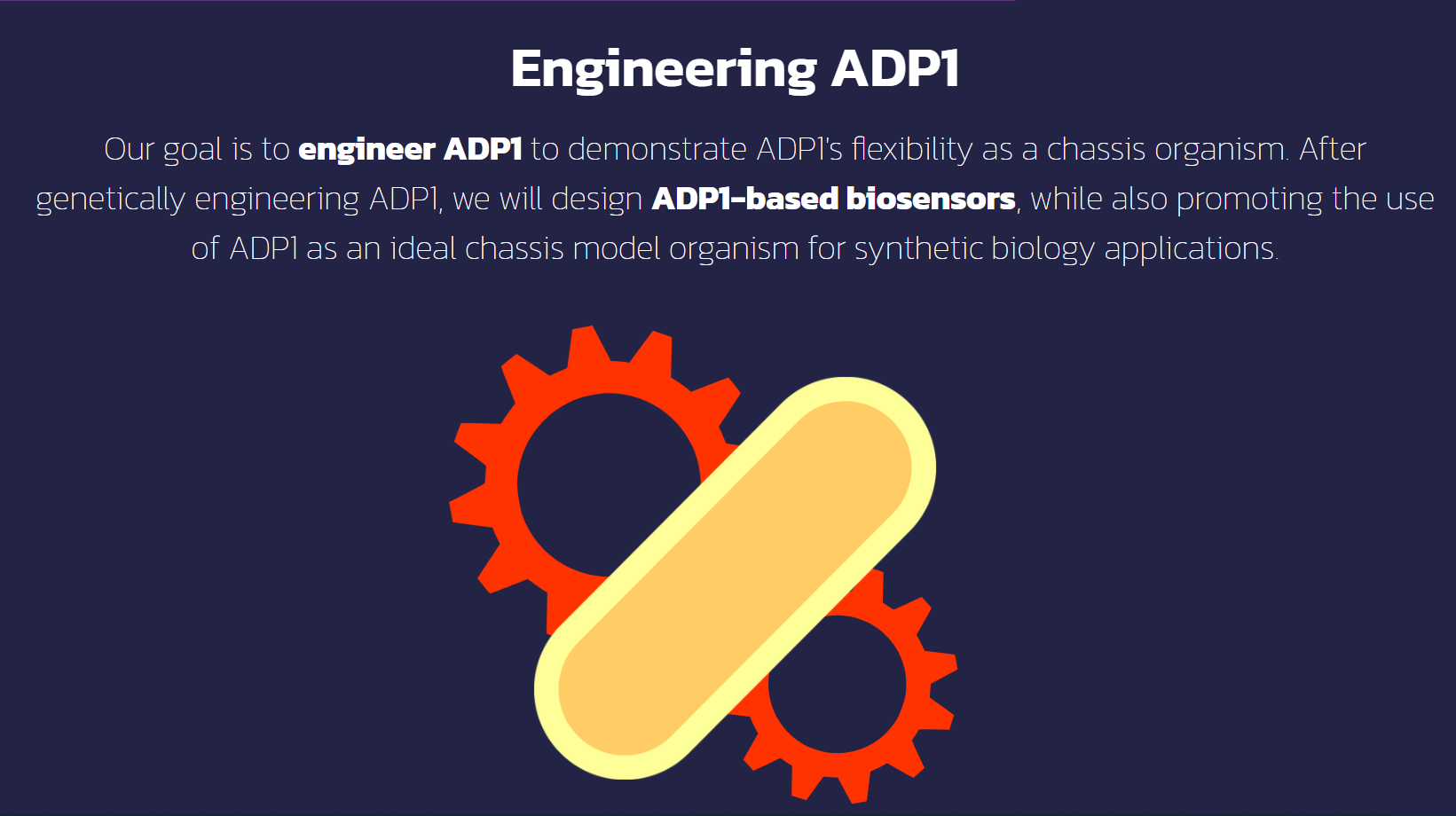Part:BBa_K4342030
YFP Rescue Cassette
Introduction
The 2022 UT Austin iGEM Team’s Part Collection provides a number of DNA sequences and procedures for genetically engineering Acinetobacter baylyi ADP1. We were able to effectively engineer ADP1's genome using a two-step genetic engineering protocol. See the Engineering Page for more details on how we modified ADP1's genome. On this page, we explain how our part collection can be used alongside this two-step protocol to delete ADP1 genes, insert DNA sequences into any chromosomal location, and engineer an ADP1-based biosensor to detect any DNA sequence of interest.
We hope this part collection guides future iGEM teams in engineering ADP1 and utilizing ADP1’s flexibility to tackle any challenge in synthetic biology.
Categorization
For our parts collection, we categorize our parts into the following categories:
Upstream
An Upstream basic part is a DNA sequence directly upstream of a target gene. These basic parts are homology flanks that are used for ADP1 Genetic Engineering. Examples include the ACIAD2049 Upstream for P. destructans detector (BBa_4342003) and pbpG Upstream (BBa_4342011).
Downstream
A Downstream basic part is a DNA sequence directly downstream of a target gene. These basic parts are homology flanks that are used for ADP1 Genetic Engineering. Examples include ACIAD2049 Downstream for P. destructans detector (BBa_4342004) and pbpG Downstream (BBa_4342012).
Integration Cassettes
An "Integration" cassette is a composite part consisting of an "Upstream" basic part, the tdk/kan basic part (BBa_4342000), and a "Downstream" basic part. These parts are designed to use in the first transformation step in ADP1 Genetic Engineering. Examples include the ACIAD2049 Integration cassette (BBa_4342019) and the acrB Integration cassette (BBa_4342023).
Rescue Cassettes
"Rescue" cassette is a composite part consisting of an "Upstream" basic part, an optional genetic device, and a "Downstream" basic part. These parts are designed to use in the second transformation step in ADP1 Genetic Engineering. Examples include the ACIAD2049 Rescue cassette (BBa_4342020, Upstream + Downstream), the YFP Rescue cassette (BBa_4342030, Upstream + Genetic Device + Downstream), and the nptII Detector Rescue cassette (BBa_4342031, Upstream + Composite Part + Downstream).
Genetic Device
"Genetic Device" is a basic part that can be any DNA sequence to be integrated into ADP1. Examples include the CymR YFP (BBa_4342008) and the nptII Broken Gene (BBa_4342015).
We further categorize each part with a standardized Golden Gate Assembly (GGA) Type 1-8 Overhang [2]. Each type is ligated to a complementary type (ex. Type 2 can be ligated to Type 1 and Type 3). Moreover, some parts contain consecutive GGA Type numbers, such as Type 234. These DNA sequences start with a Type 2 Overhang and end with a Type 4 Overhang (ex. tdk/kan cassette (BBa_4342000).
Usage and Biology
ACIAD2049 is a nonessential gene in Acinetobacter baylyi ADP1. Knocking out this gene allows for the integration of other DNA sequences in its chromosomal location. Cooper et al. and colleagues have taken advantage of the ACIAD2049 gene deletion to create ADP1-based biosensors capable of detecting diseases within the human body [1]. Using this part, we demonstrate that deleting ACIAD2049 can be used to detect antibiotic resistance genes using ADP1 as a chassis organism.
Pseudogymnoascus destructans is a fungus that causes White Nose Syndrome (WNS), a disease lethal to bats. Via BLAST searching, we found a DNA sequence unique to P. destructans to use as a target for homologous recombination in our WNS biosensor. Additionally, this part is classified as a Type 1c part in our collection (BBa_K4342000-BBa_K4334033), since it is a downstream homology required to create a tdk/kan integration cassette for the P. destructans detector. This integration cassette allows for the selection of engineered ADP1 with kanamycin.
The tdk/kan cassette is a highly versatile sequence used for efficiently and effectively engineering the Acinetobacter baylyi ADP1 genome. The part contains the kanR and tdk genes which allow for the selection and counterselection of genetically engineered ADP1 cells. When this cassette is integrated into the ADP1 genome, the kanR gene confers resistance to kanamycin and the tdk gene is lethal to the cell when Azidothymidine is present (Metzgar et. al - 2004).
The CymR repressor in Acinetobacter baylyi ADP1 codes for a repressor of the CymR YFP promoter. The repressor deactivates the CymR YFP promoter, which inhibits the expression of a YFP gene.
Design
The P. destructans detector construct composite part consists of the ACIAD2049 Upstream Homology (BBa_4342003) + P. destructans Target Sequence Upstream Homology (BBa_4342005) + tdk/kan cassette (BBa_K4342000) + CymR repressor (BBa_4342007) + P. destructans Target Sequence Downstream Homology (BBa_4342006) + ACIAD2049 Upstream Homology (BBa_4342004). This composite part prevents growth on AZT, give KAN resistance, and represses CymR YFP expression when present in ADP1. Homologous recombination of the target P. destructans sequence will select for growth on AZT and YFP expression.
References
[1] Meyer, A., Shegall-Shapiro, T., Glassey, E., Zhang, J., Voigt, C. (2019). Escherichia coli “Marionette” strains with 12 highly optimized small molecule sensors. Nature Chemical Biology 15, 196-204 (2019). https://doi.org/10.1038/s41589-018-0168-3
- 10COMPATIBLE WITH RFC[10]
- 12COMPATIBLE WITH RFC[12]
- 21INCOMPATIBLE WITH RFC[21]Illegal BamHI site found at 367
- 23COMPATIBLE WITH RFC[23]
- 25COMPATIBLE WITH RFC[25]
- 1000COMPATIBLE WITH RFC[1000]
| None |

